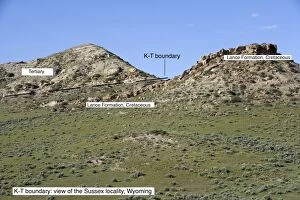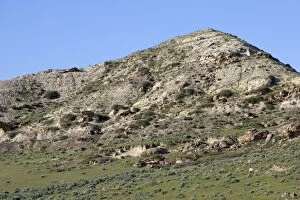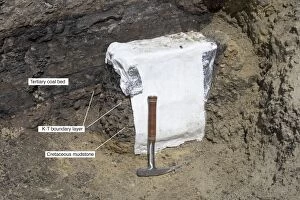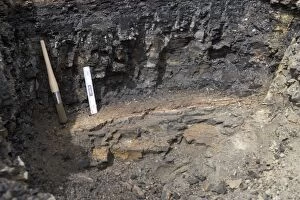Kt Boundary Collection
The K-T boundary, located at the Sussex locality in Wyoming, USA, is a significant geological site that marks a crucial transition in Earth's history
All Professionally Made to Order for Quick Shipping
The K-T boundary, located at the Sussex locality in Wyoming, USA, is a significant geological site that marks a crucial transition in Earth's history. This boundary layer separates the uppermost part of the Lance Formation from the Cretaceous period. The K-T boundary claystone sample collected from this site showcases its unique characteristics. Measuring 18 mm thick, this fragile laminated carbonaceous layer contains grains of sand like quartz. Its distinct composition and structure provide valuable insights into the events that occurred during this critical time period. A photo of the Sussex locality reveals a hill near the town of Sussex, north of Casper. The K-T boundary layer is indicated by a line on the photograph, clearly demarcating it from other sediments below. Geologists collecting rock samples at this site for museum display ensure to include both Cretaceous rocks under the boundary as well as specimens from within the boundary layer itself. These samples help researchers study and understand various aspects related to paleontology and environmental changes during this era. Close-up images showcase detailed views of the K-T boundary claystone layer. At its bottom lies mudstone deposits belonging to Lance Formation from Cretaceous times. Artwork depicting an impact event known as Cretaceous-Tertiary Impact further highlights how significant events shaped our planet's history during this time frame.








